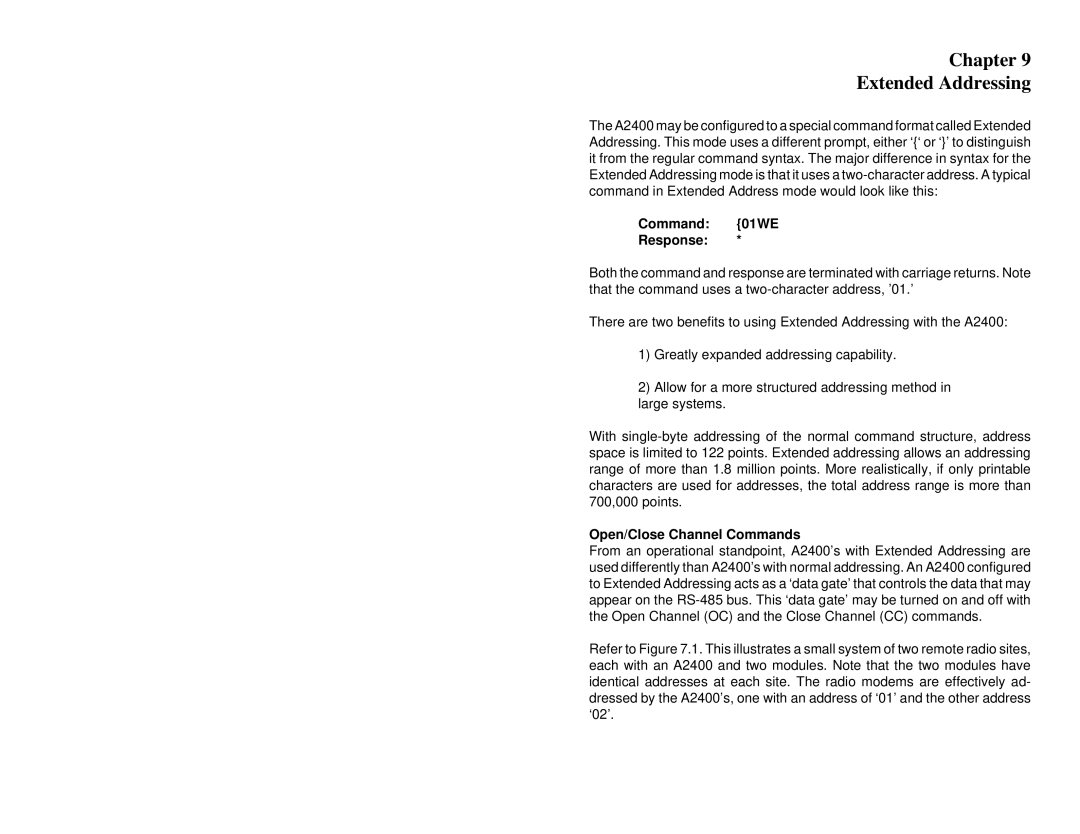Chapter 9
Extended Addressing
The A2400 may be configured to a special command format called Extended Addressing. This mode uses a different prompt, either ‘{‘ or ‘}’ to distinguish it from the regular command syntax. The major difference in syntax for the Extended Addressing mode is that it uses a
Command: {01WE
Response: *
Both the command and response are terminated with carriage returns. Note that the command uses a
There are two benefits to using Extended Addressing with the A2400:
1)Greatly expanded addressing capability.
2)Allow for a more structured addressing method in large systems.
With
Open/Close Channel Commands
From an operational standpoint, A2400’s with Extended Addressing are used differently than A2400’s with normal addressing. An A2400 configured to Extended Addressing acts as a ‘data gate’ that controls the data that may appear on the
Refer to Figure 7.1. This illustrates a small system of two remote radio sites, each with an A2400 and two modules. Note that the two modules have identical addresses at each site. The radio modems are effectively ad- dressed by the A2400’s, one with an address of ‘01’ and the other address ‘02’.
